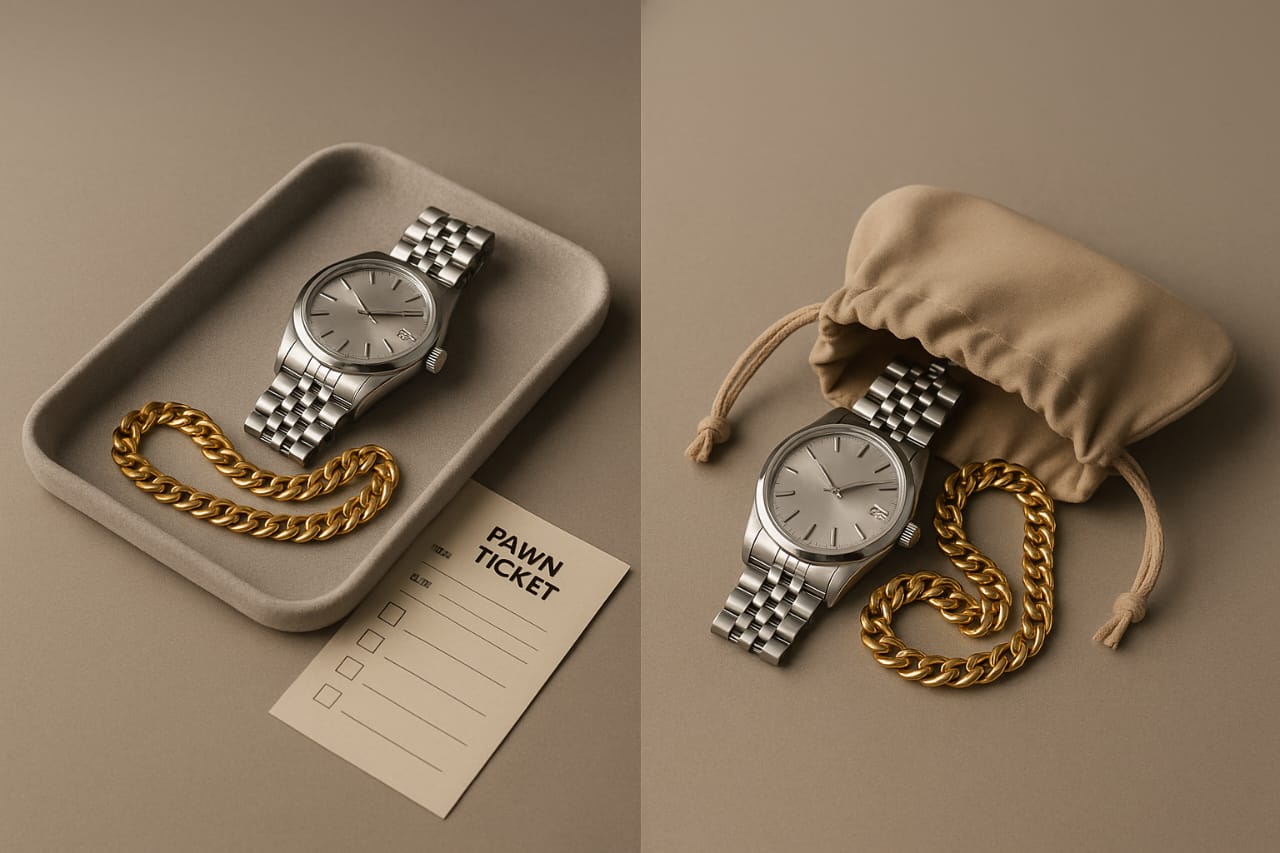When a sudden expense hits—unexpected repairs, seasonal cash gaps, or a client paying late—you usually have two fast ways to unlock liquidity from valuables: pawn or sell. Both routes can be sensible. The smart choice depends on whether you want the item back, your timing, and the total cost you’re willing to accept for shortterm liquidity.
A pawn loan is collateralbased: you pledge an item (for example a gold chain or a luxury watch) and receive a cash loan. There’s no credit check, no impact on your credit file, and the standard redemption period is approximately four months with the option to extend. Selling is the permanent alternative: you transfer ownership for a onetime payout and walk away. After the first 100 words, you can learn more about a reputable pawn loan provider in Berlin.
How pawn loans work
With a pawn loan, your item secures the financing. The pawnbroker assesses the object’s market value and lends a percentage of that value. Because the loan is assetbacked, there’s no income proof or credit scoring. You receive cash quickly—often the same day.
Key features in Germany:
- No credit check: approval is based on the item.
- Typical redemption period ≈ 4 months: you can redeem by repaying principal plus interest/fees; extensions are generally possible.
- Fast payout: convenient when a bill or opportunity is timecritical.
- Reversible: if you repay, you keep your asset; if you don’t, the pawnbroker sells it and there’s no debt collection against you.
Selling outright: when a clean exit makes sense
Selling can be preferable if you don’t plan to use or keep the item. It removes storage and service costs (relevant for watches) and gives the highest possible net cash today. Choose selling if:
- The item is not sentimental or part of a collection.
- You want to simplify and convert dormant assets to cash.
- You believe nearterm market prices are favorable.
Cost, transparency, and timing: a sidebyside view
Pawn involves interest and statutory or agreed fees over the term, but you retain the option to redeem. Selling pays out once with no further obligations, but the item is gone permanently. Ask for a fee schedule, redemption dates, and extension conditions in writing. In reputable shops, you’ll receive a contract outlining all costs and timeframes in advance.
Worked example: watch worth €5,000
- Scenario A—Pawn: The watch is appraised and you receive a loan of, say, €3,000. Over four months, you pay interest/fees according to the tariff. You redeem within the term and keep the watch. Total cost = interest/fees; benefit = liquidity with asset retention.
- Scenario B—Sell: You sell for the best available offer—perhaps €4,500 depending on reference, condition, and demand. You receive a single payout. Benefit = maximum cash today; tradeoff = you forgo future ownership and potential appreciation.
Decision tree: quick questions to guide you
- Do you want the item back?If yes, consider pawn; if no, selling is cleaner.
- How urgent is the cash need?Both are fast, but pawn can be sameday without paperwork beyond ID and ownership confirmation.
- Are you comfortable with fees in exchange for reversibility?Pawn makes sense if keeping the item has value to you.
- Is market demand peaking right now?If prices are unusually strong, selling could be optimal.
Checklist before you pawn or sell
- Gather documents: ID, proof of purchase, certificates (for watches: box/papers, service records).
- Clean the item lightly; don’t polish aggressively.
- Ask for a transparent valuation and written terms.
- Compare offers where practical.
- Calendar your redemption date if pawning; note extension options in advance.
FAQ
Do pawn loans affect my credit score? No. They’re collateralbased and don’t require a credit check.
What if I can’t redeem in time? Extensions are usually possible. If you ultimately don’t redeem, the item is sold; you won’t be pursued for the balance.
Is valuation the same for pawning and selling? The valuation method is similar, but the loan amount is typically a percentage of resale value, while a purchase offer reflects the full resale value minus dealer margins.
Which items are suitable? Gold, silver, diamond jewelry, and welldocumented luxury watches are common.
Conclusion & CTA
Pawn versus selling is a practical choice, not a moral one. If you value the option to reclaim your asset, a pawn loan can bridge a shortterm gap transparently and quickly. If you’re ready to part with the item, selling offers a clean exit and often the highest payout today. If you’d like to discuss your situation in person, you can also contact the Berlin team.
